In July, the mountain people start appearing in the fresh markets. On tables and in booths, they spread their wares: strange, colorful mushrooms that they have gathered by hand in the wild mountains of Yunnan Province, China. Yunnan people are known for making the most of nature’s bounty, and this is seen nowhere more than in the enormous variety of wild fungus in and around Kunming. For a short time — during July and August — wild mushrooms are in season, and then they disappear as quickly and mysteriously as they arrived.
I went to my local market to check out the mushroom situation. Several booths were selling the wild fungi (I love Latin plurals), and it looked like most of them had the same varieties. So of course I chose the lady with a tarp on the ground. She just seemed more interesting than the vendors in traditional booths. She was selling four varieties of wild mushrooms, all of which were quite exotic, and very expensive. I chose the cheapest ones, which were still 150 RMB per kilo, which is quite pricey according to the local standard of living. By comparison, standard white mushrooms are about 15 RMB per kilo. So I bought 50 RMB worth of the red and yellow mushrooms that you can see on the right side of the photo above this paragraph.
These mushrooms are called 见手青 (jianshouqing), which translates to see hand green. It is a reference to the fact that touching the yellow gills under the cap causes them to turn a blue-green as they are oxidized. In fact, any part of the mushroom’s interior that is exposed to outside air will turn a brilliant, beautiful cyan. When I discovered that, I knew that I liked this mushroom already. The natural color of the jianshouqing begins with a brown cap with yellow gills underneath, which then fades into a crimson on the stalk and down to the root.
As you might imagine, picking and eating wild mushrooms is a risky proposition. Some mushrooms are perfectly edible; some produce nausea and vomiting; some are hallucinogenic; and some are quite deadly. Well, while researching the proper cooking methods for my mushroom on the internet, I discovered — to my shock – that the jianshouqing is a hallucinogenic mushroom! They contain psilocybin, a chemical that produces hallucinations, much like those experienced on LSD. These particular mushrooms are apparently famous in Yunnan for making the eater see 小人人 (xiao renren), meaning little men. Most people who hallucinate on these mushrooms see tiny, colorful little men marching and dancing around.
I was quite hesitant to use these mushrooms in a dish, as you might imagine. But all of my research indicated that the hallucinatory effects only occur if the mushrooms are eaten raw or undercooked. If they are fully cooked, the heat destroys the psilocybin and makes them no more dangerous than any common, edible mushroom. So, for the sake of the culinary art, I determined to cook them, little men be damned!
In order to ensure that they were cooked thoroughly and evenly, I cut them into small, thin slices, both stems and caps. I debated wearing plastic gloves to ensure that I did not get intoxicated (literally) through my skin, but then decided that it was too much trouble. Everything I had read about the jianshouqing said that they should be sautéed at medium-to-high heat until they are thoroughly cooked, but obviously not burned or fried to a crisp. But before I go on about the mushroom’s hallucinogenic properties, I should describe how I prepared the entire dish.
Much Chinese food begins with garlic and onions, and this was no exception. In fact, I read that sliced garlic is used as a sort of canary in the mine: if it turns black when cooked with the mushrooms, then they are dangerously toxic, although it sounds like an urban myth to me. To me, the garlic was not so much a litmus test, but instead a pungent flavoring agent. Then to offset the acidity of the garlic and onions, I cut up a red capsicum pepper, and some smaller, very hot chili peppers. I decided to first sauté the mushrooms, set them aside, cook the rest, then put it all together. I chose only a little salt to sprinkle on the dish — no MSG this time, because I wanted to taste the pure flavor of the mushrooms.
Into the pan went the mushrooms with a fairly liberal amount of oil. As it ended up, this was not so much a proper sauté as a pan-fry, but I was still nervous about the toxin. I suppose a braver man than I would have tasted a bit of a raw one to experience the little men, but I knew that mushroom toxicity is nothing to play around with.
When the mushrooms hit the hot oil and began to cook, the most unusual thing happened. They began to give off the very distinct, strong scent of cooking bacon and cheese. This is not an exaggeration — my friend confirmed it. This of course made me very excited, because I know that mushrooms contain a wide variety of flavors, and up to this point in my life, I had only tasted the relatively mild, European and American varieties of culinary mushrooms. So as the kitchen filled with this bacon and cheese smell, I began to salivate in anticipation.
As the mushrooms cooked, they shrank a bit, and released some of their water. Careful not to burn or crisp them, I moderated the heat the best I could on my cheap electric stove (most Chinese kitchens only have a portable electric stove). I ended up cooking them for about 15 minutes, much longer than necessary, but long enough to ensure that the toxin had broken down in the heat. The longer they cooked, the more the bacon and cheese scent subsided, and was replaced by a distinct walnut smell. I was fascinated by this range of scents that the cooking mushrooms exuded, and I almost burst with excitement as I imagined tasting them.
I turned off the heat, and put the mushrooms aside, draining the oil from them in a colander. I then did a quick stir-fry of the flavoring vegetables, cooking them just long enough for the garlic to soften a bit, and to release its pungent smell. I added the mushrooms back in and stirred the entire mixture on heat for just a couple of moments. Finally, I was ready to taste the dish.
Many residents of Yunnan’s tiny, rural, farming villages, consider the jianshouqing to be the most delicious of the wild mushrooms. I can certainly see why. They burst with flavor in my mouth, their unctuous flesh releasing very strong — and distinct — flavors of walnut, oak, earth, and meaty pork. The garlic, onions, peppers, and salt only enhanced the flavor. I had never before tasted mushrooms so exploding with clear, concentrated flavor.
It was as if these fungi had during their lifespans absorbed the very essence, the very nature, of a mountain forest. There were even very subtle, elegant hints of pine needles and wet leaves. The sensation truly took me in spirit and in mind to a pristine forest high on a misty mountain. They were sublimely delicious and abundantly flavorful. This was an extremely special experience for me, because as far as I know, Yunnan is about the only place in the world where I can legally buy these mushrooms at market, freshly-picked from the mountainside. I may never have this opportunity again in my life.
So, I know you want to find out if I experienced any of the hallucinogenic effects of the psilocybin. Did I see the xiao ren ren marching and dancing about my kitchen? Did I experience visions of brightly-colored mushrooms performing a choreographed show for me, as in The Sorcerer’s Apprentice? Did I climb to the roof of my building and try to fly off into the night? Well, no. I had cooked them thoroughly enough to destroy the toxin.
However, I have to say that, for the rest of the evening, I had a very distinct feeling of calmness, openness, happiness, and colors and sounds definitely seemed more detailed and emphatic than they had before. Was this just psychological, a placebo effect so to speak? I actually think that I really did experience some very light effects of the mushroom. My feelings and perceptions were definitely real and not imagined. They were not strong at all, but they did add a very nice ending to a wonderful culinary experience. So, little men or not, I highly recommend cooking with the 见手青 if you can get a hold of it. Just be very sure to handle and cook it properly, or you might be joining the fairy world.


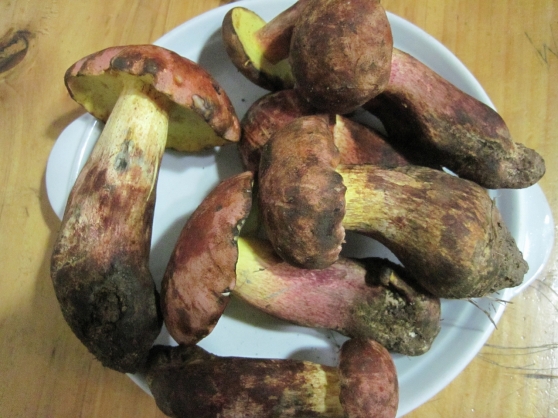
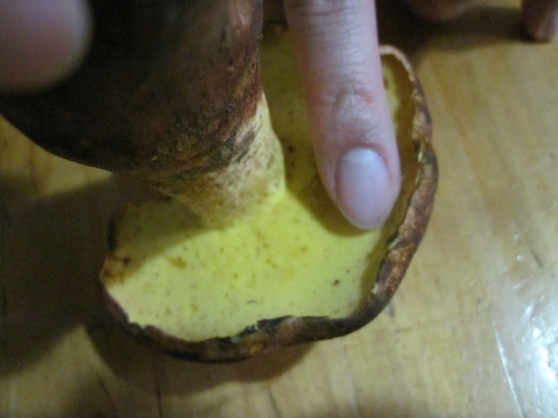
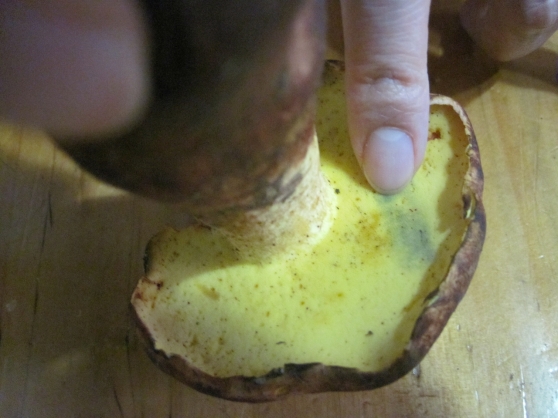
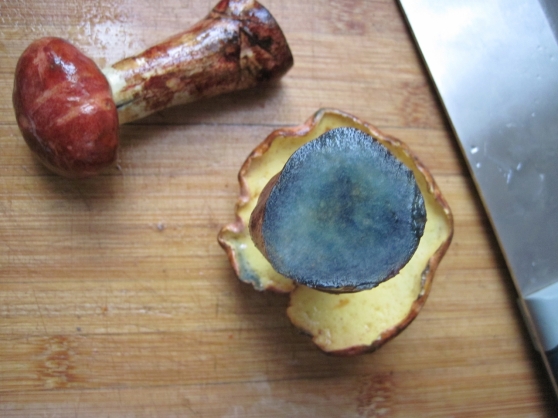
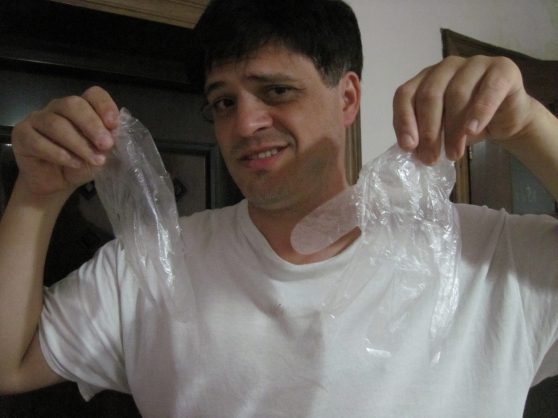
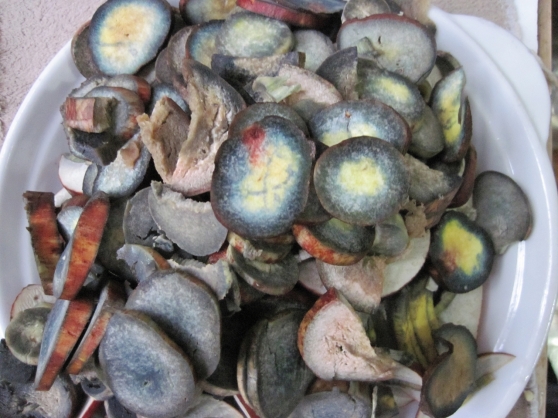
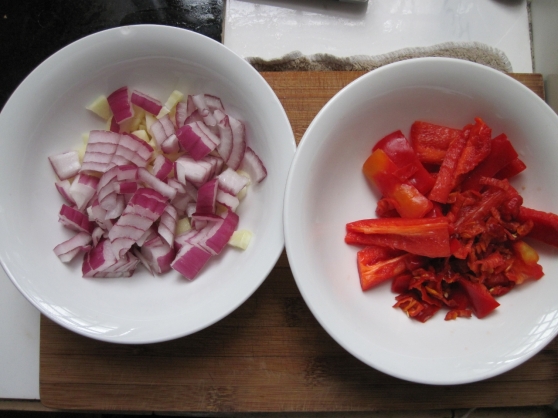
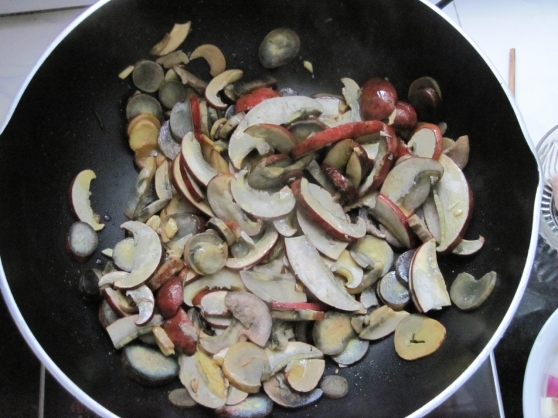
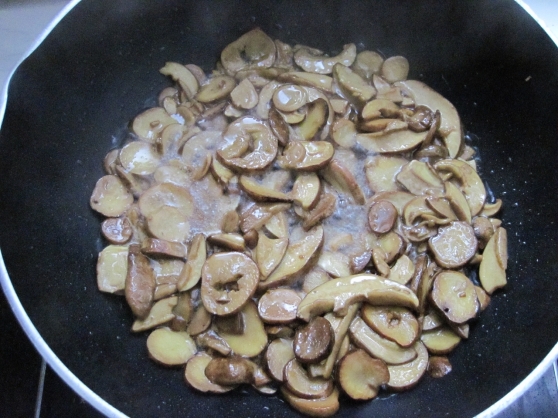
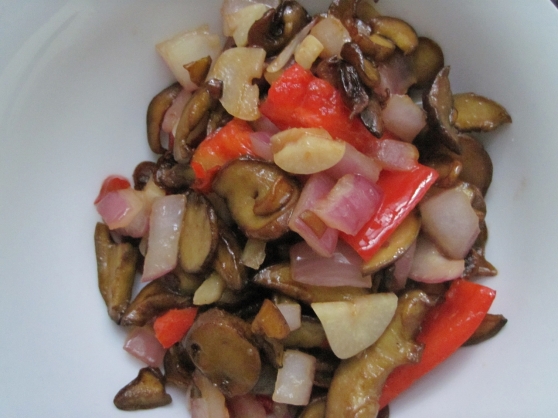

While there are strange reports of the xiao ren ren from undercooked blue-staining boletes, it’s unlikely that psilocybin is the responsible chemical. All psilocybin mushrooms discovered to date are in the fungal order Agaricales, while the mushrooms pictured are in order Boletales. Also, I have heard that cooking doesn’t completely degrade psilocybin, and some people quite enjoy frying their mushrooms and their mind!
Interesting! I did not see the little men myself, and I have since even tried the mushrooms raw.
I think it might be this:
http://en.wikipedia.org/wiki/Boletus_calopus
All boletes that bruise blue are poisonous. Won’t kill you but you will not be seeing 小舞人。
meals
Well, I am glad I will not die. However, I was sort of hoping to see the little men.